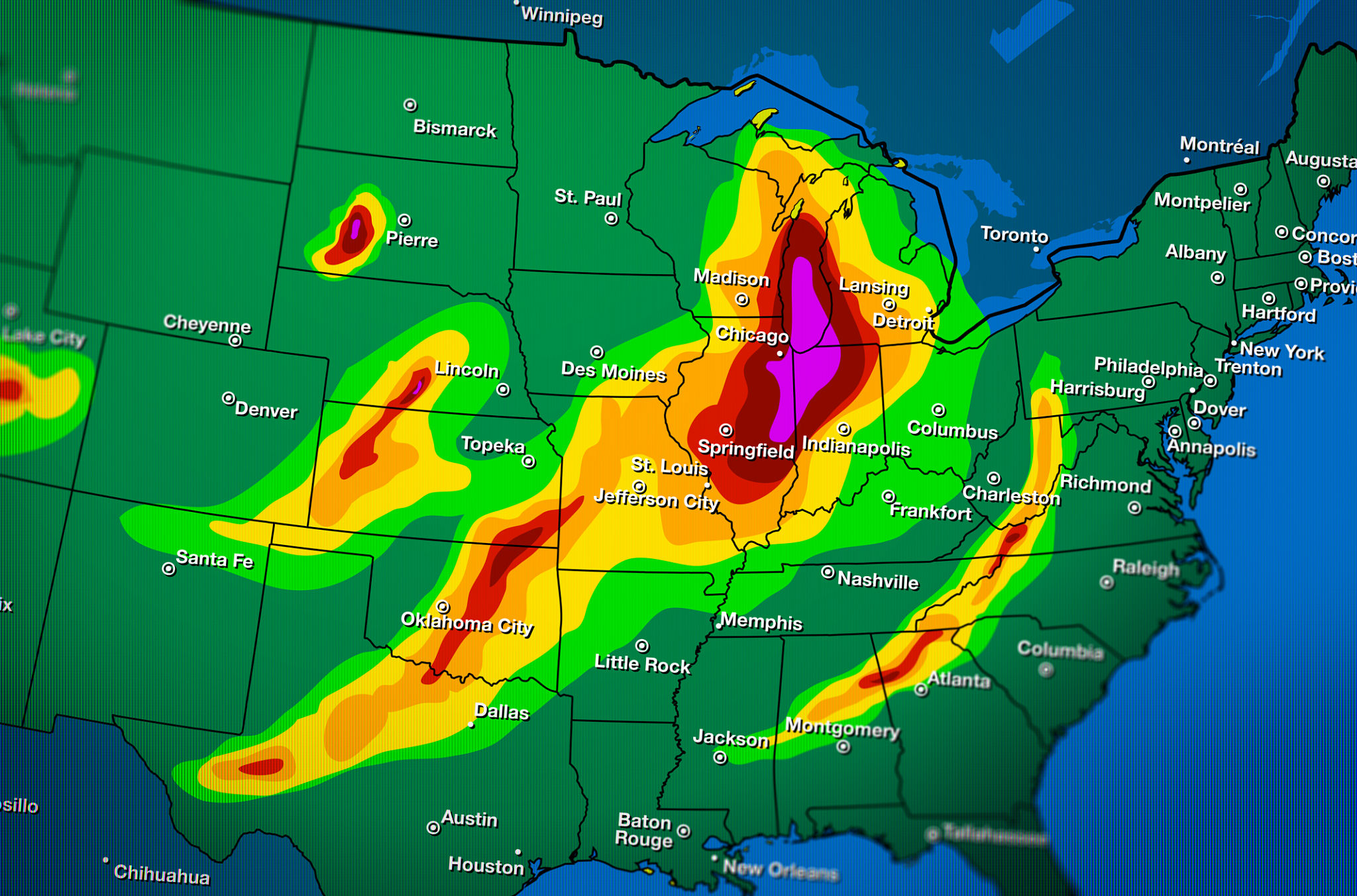Understanding the Impact of North Carolina's Climate on House Painting
Introduction to North Carolina's Climate
North Carolina presents a unique climate that significantly influences home maintenance, particularly house painting. The state experiences a blend of coastal, mountain, and Piedmont climates, making it essential for homeowners to understand how these conditions impact their home's exterior.
The coastal areas face salty air and humidity, while the mountainous regions experience cooler temperatures and more precipitation. Meanwhile, the Piedmont area often encounters a mix of both. These variations create distinct challenges and considerations for house painting projects across North Carolina.

Challenges Posed by Humidity
One of the primary challenges in North Carolina is its high humidity levels, especially in coastal regions. Humidity can cause paint to dry slower and may even lead to blistering and peeling over time. This is because moisture can get trapped between the paint layers and the wall surface.
To combat this, choosing paints designed to withstand moisture is critical. Additionally, scheduling painting projects during less humid periods, such as late spring or early fall, can help ensure better results. Using dehumidifiers or fans during painting can also aid in faster and more even drying.
Temperature Fluctuations and Their Effects
North Carolina's temperature can vary significantly between seasons and even within a single day. These fluctuations can cause expansion and contraction of building materials, potentially leading to cracks in the paint.
Homeowners should choose flexible, high-quality paint that can accommodate these changes. It's also advisable to avoid painting during extremely hot or cold days, as this can affect how well the paint adheres and cures.

The Role of UV Exposure
In many parts of North Carolina, homes are exposed to intense sunlight for extended periods, particularly in the summer months. Ultraviolet (UV) rays can cause paint colors to fade and lose their luster over time.
To protect against UV damage, selecting paints with UV-resistant properties is essential. These paints are specially formulated to withstand prolonged sun exposure, maintaining their color and finish longer than standard options.
Dealing with Precipitation
The state’s varying precipitation levels also play a crucial role in house painting decisions. Mountainous regions may experience more rain and snow, which can lead to water infiltration if the paint isn't applied correctly.
Using water-resistant paints and ensuring proper sealing and caulking around windows and doors can help prevent water damage. It's also important to check weather forecasts before beginning any painting project to avoid unexpected rain showers.

Best Practices for Painting in North Carolina
To achieve the best results when painting in North Carolina, consider the following best practices:
- Select high-quality paints suitable for your specific climate zone.
- Prepare surfaces thoroughly by cleaning and removing old paint layers.
- Apply multiple thin coats rather than a single thick one for better durability.
- Choose the right time of year for your project, ideally during mild weather.
Conclusion
Understanding North Carolina's diverse climate is crucial for any successful house painting project. By considering factors like humidity, temperature fluctuations, UV exposure, and precipitation, homeowners can make informed decisions that enhance their home's appearance and longevity.
Investing in the right materials and following best practices ensures that your house paint can withstand the state's unique environmental challenges, providing beauty and protection for years to come.
